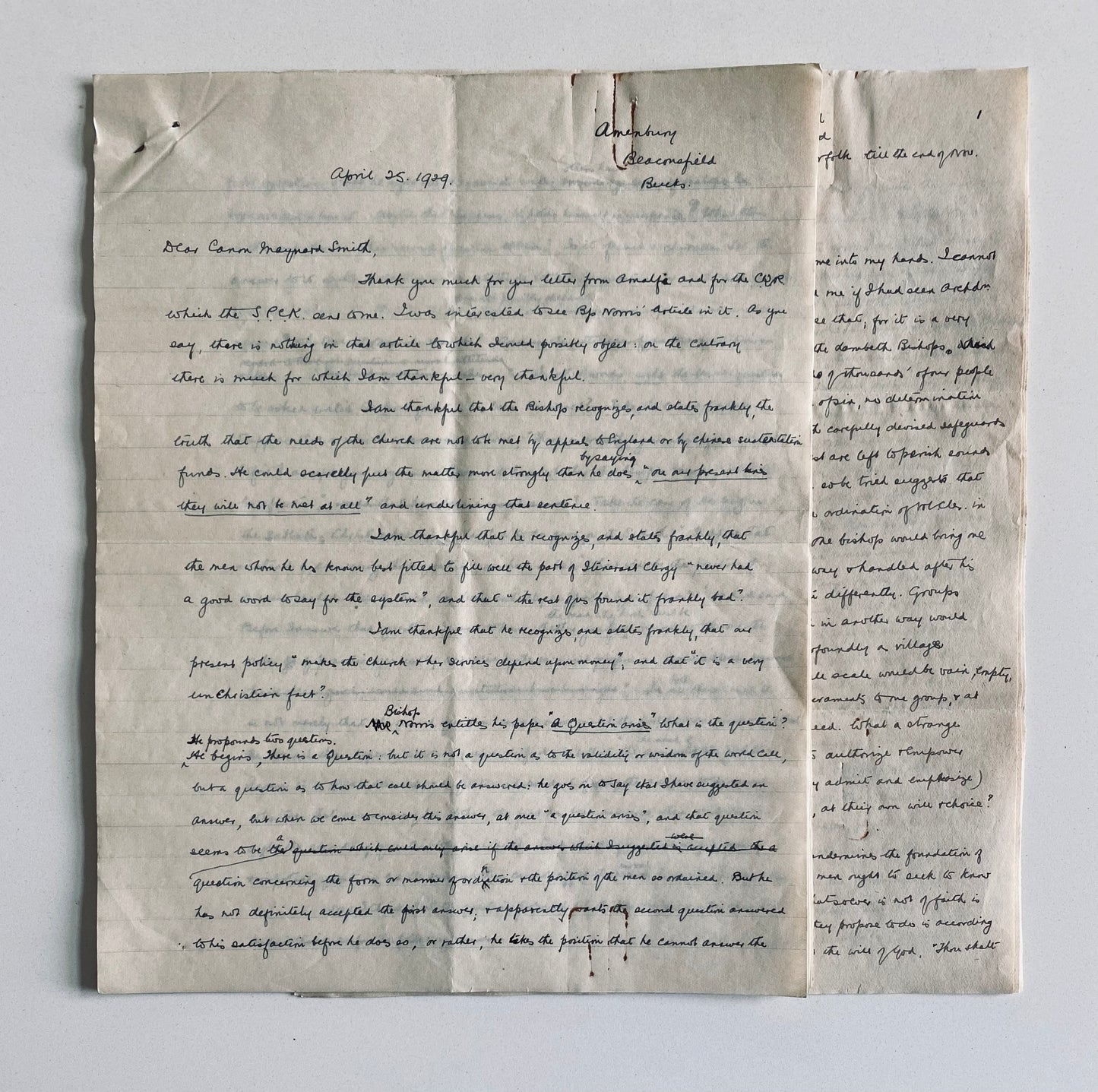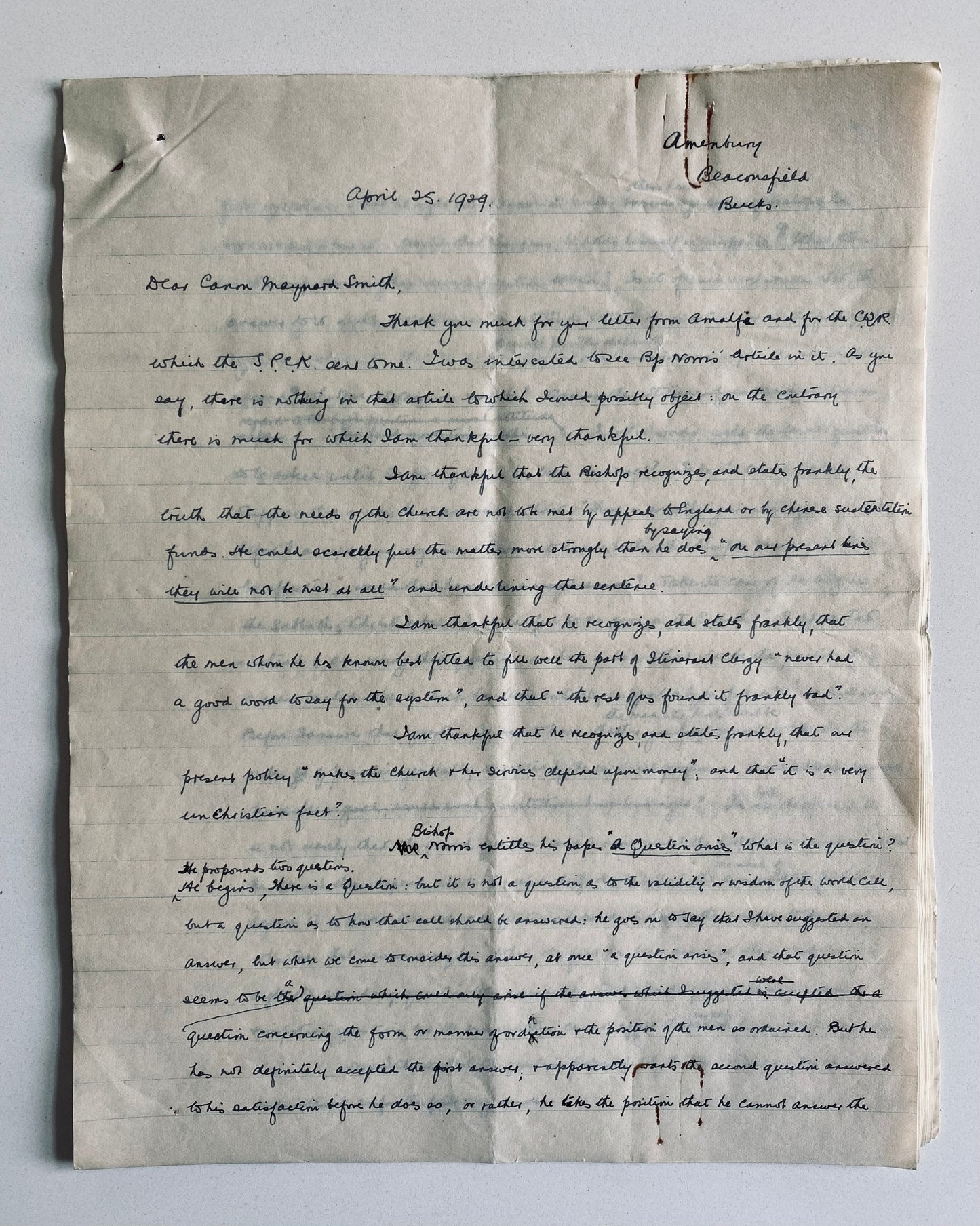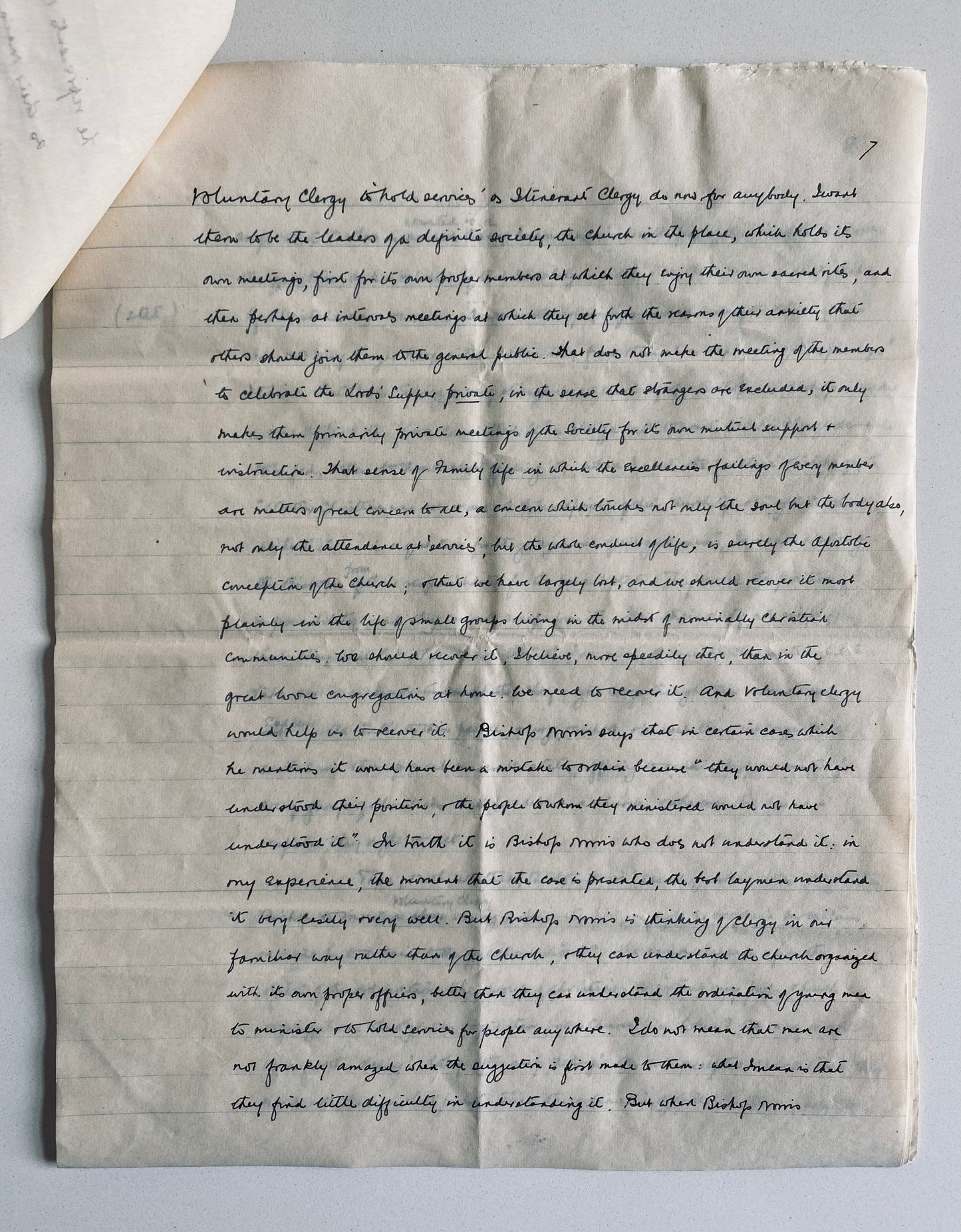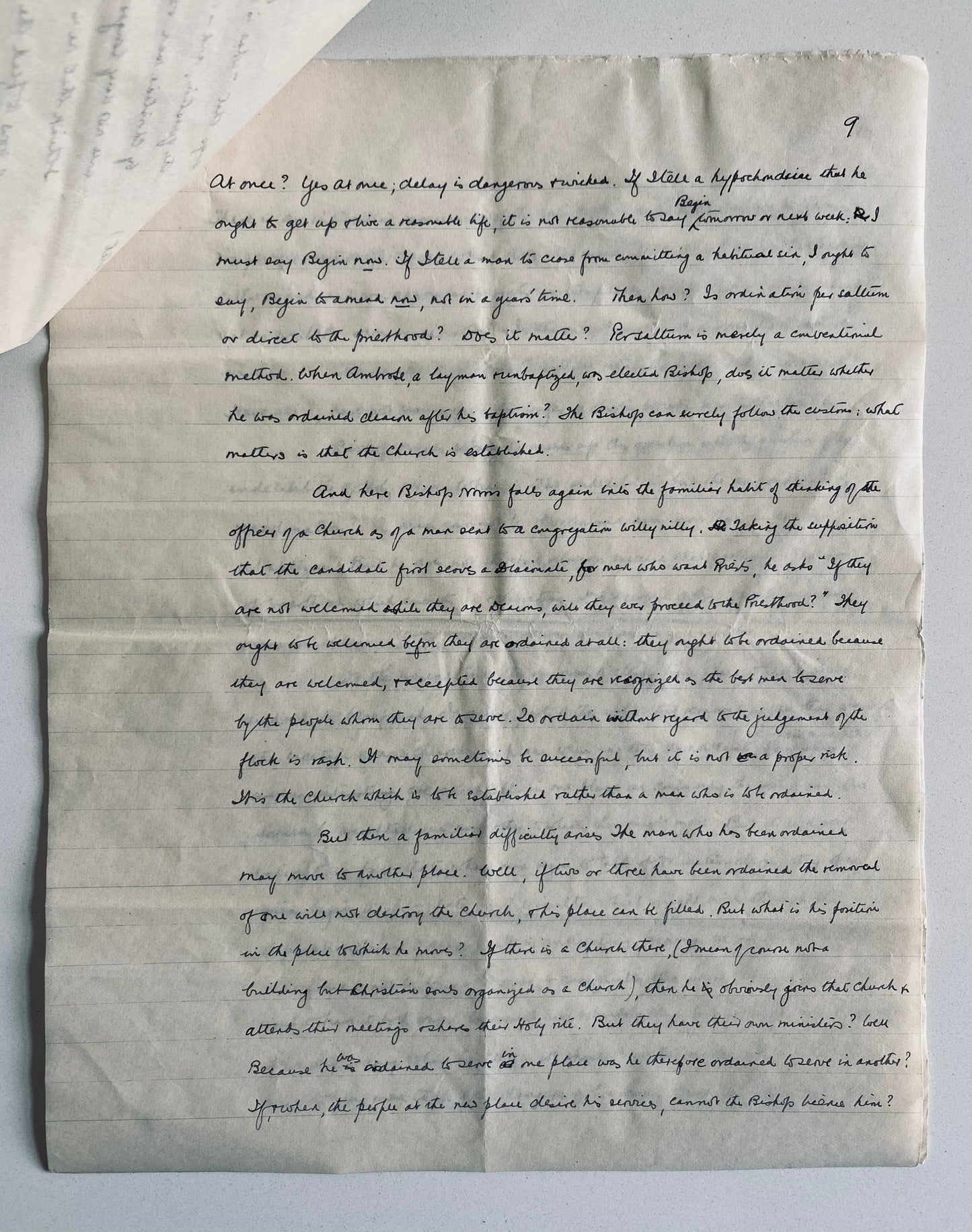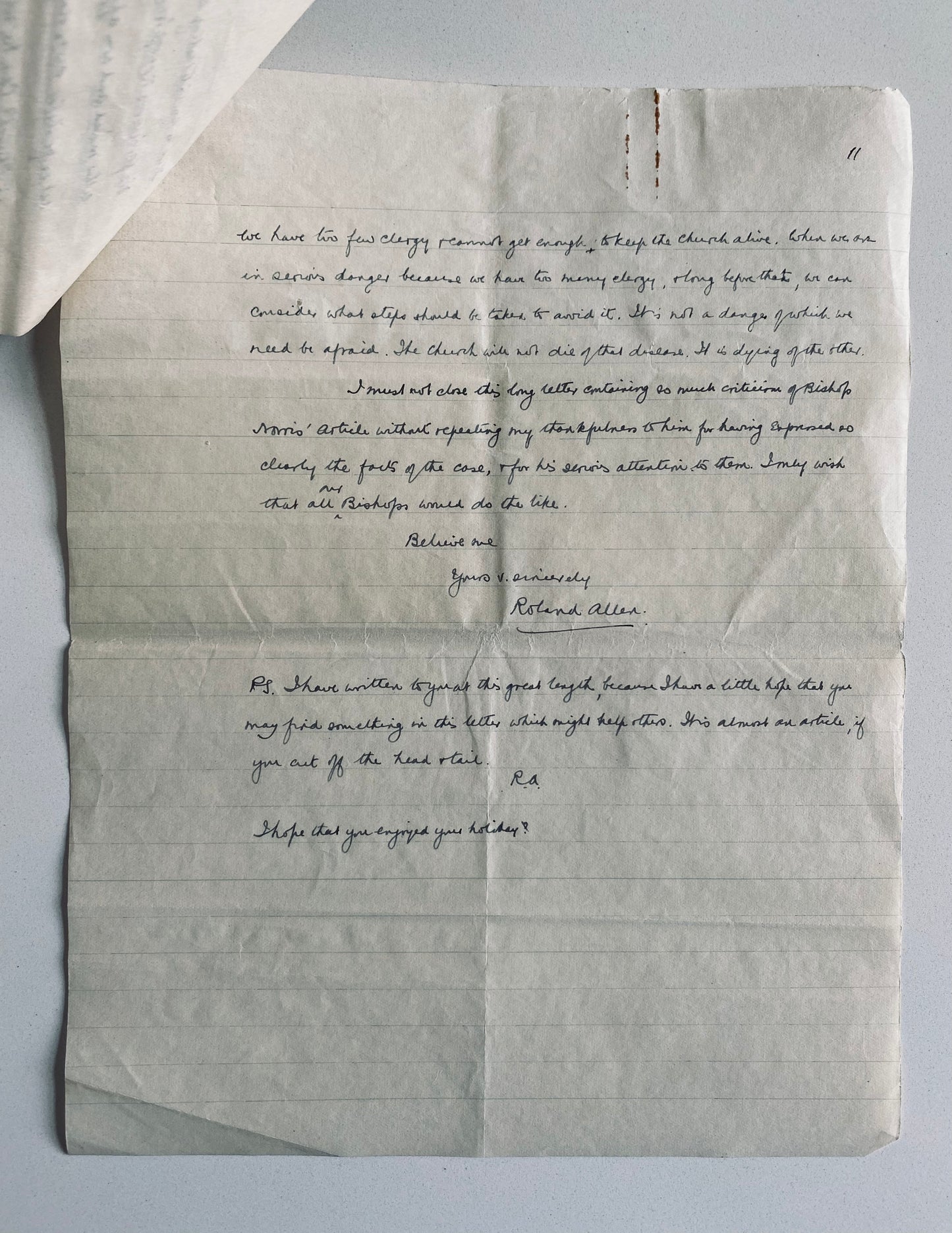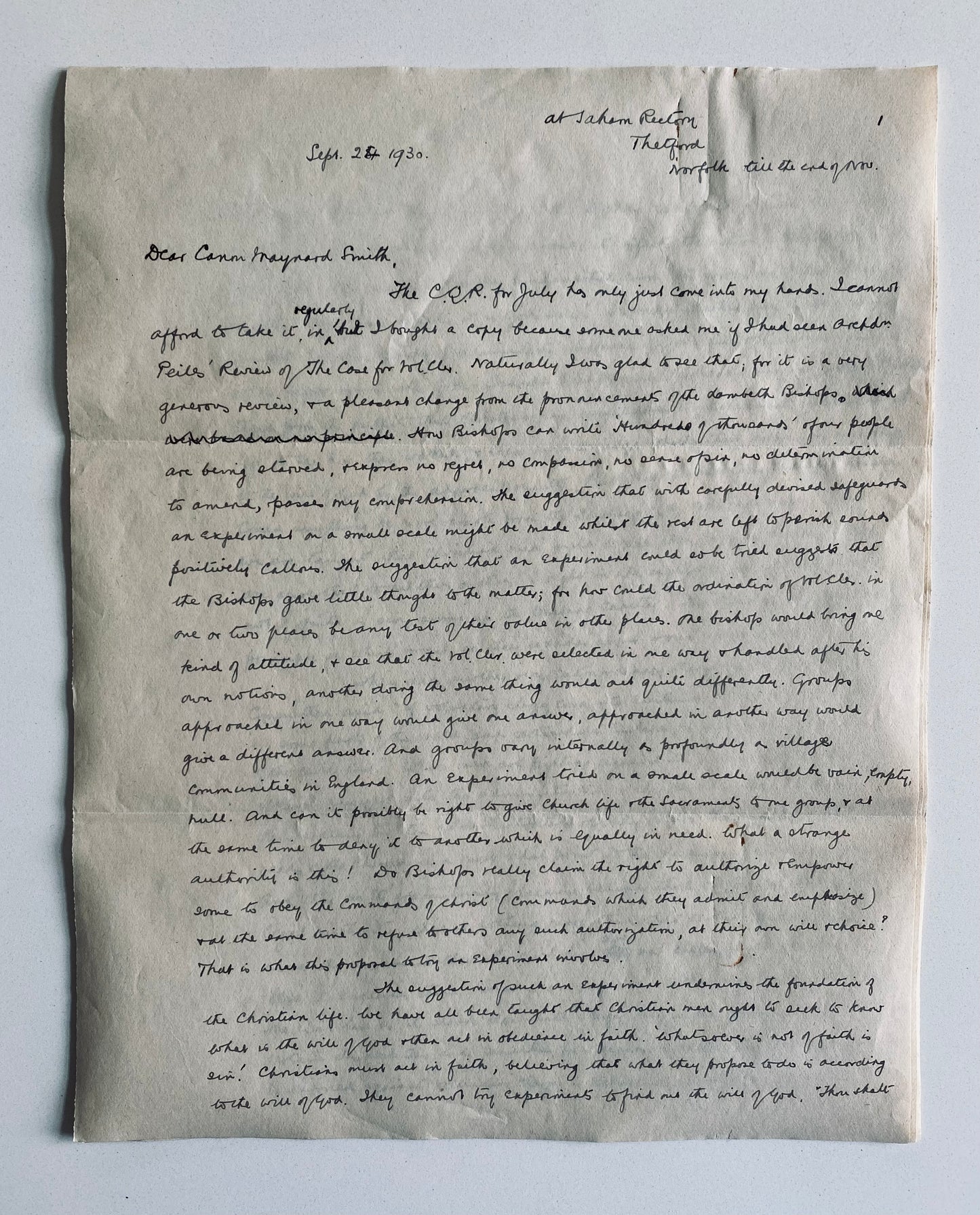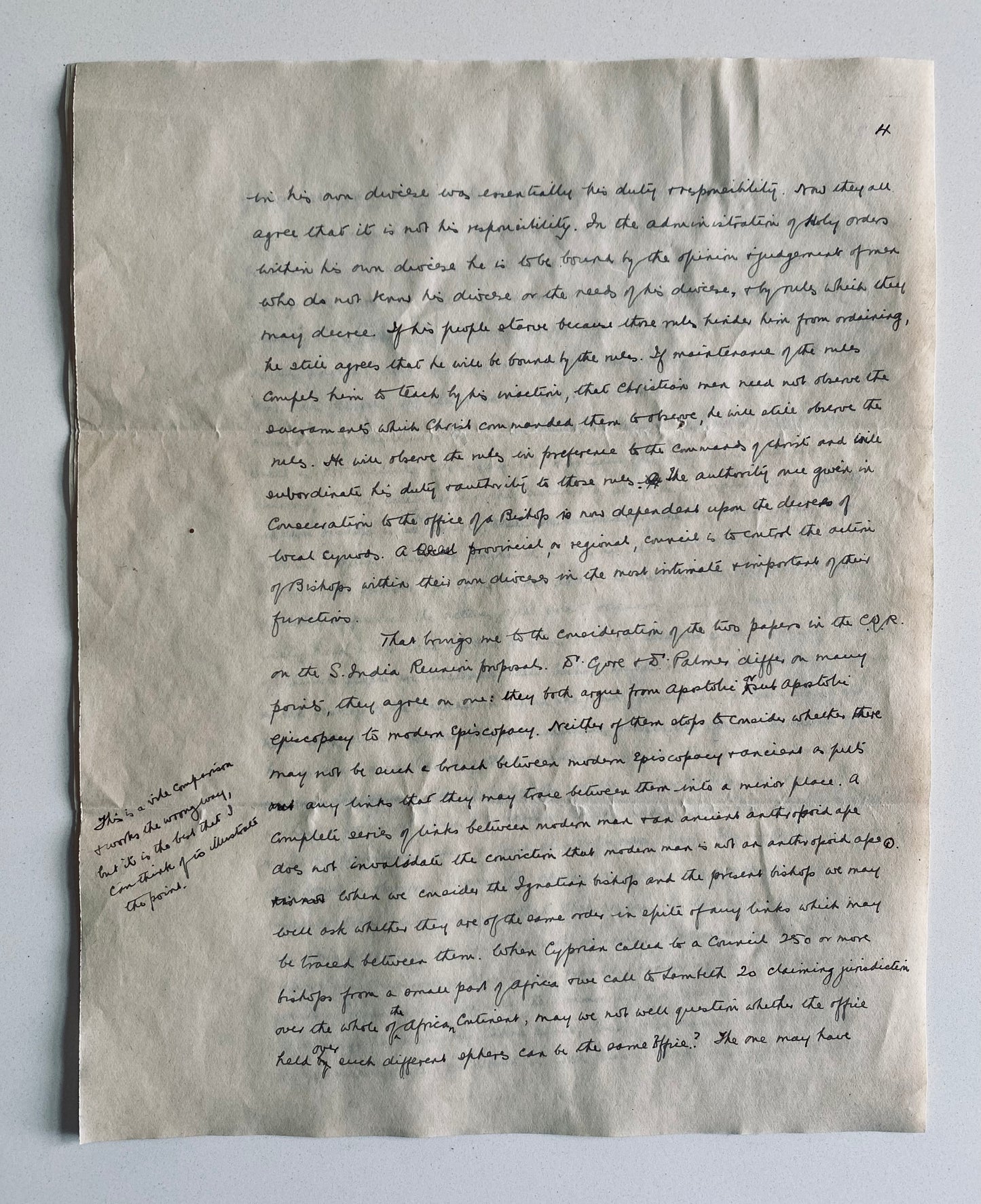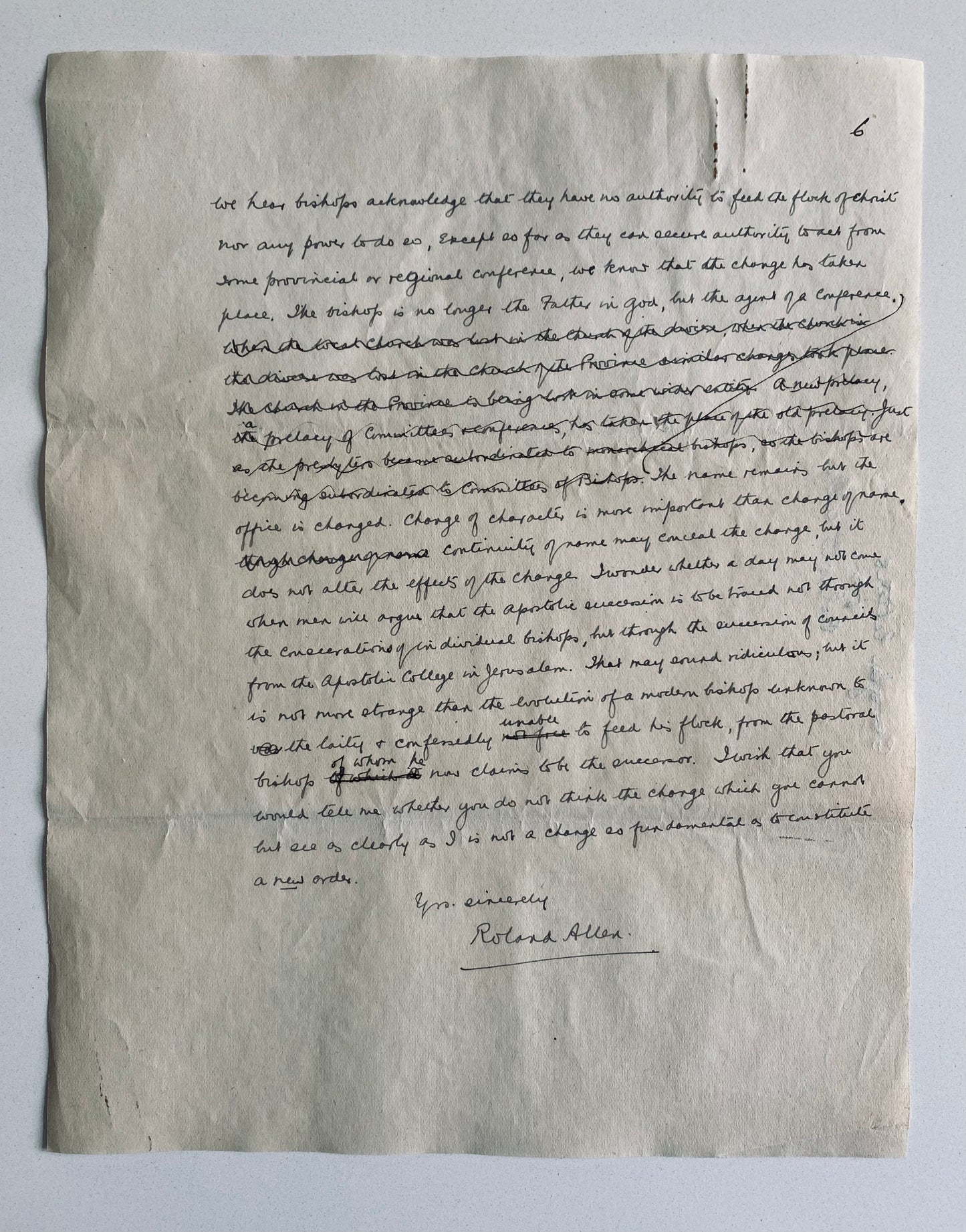Specs Fine Books
1929 ROLAND ALLEN. Sixteen Page Unpublished MSs on Missions by Important Missiologist!
1929 ROLAND ALLEN. Sixteen Page Unpublished MSs on Missions by Important Missiologist!
Couldn't load pickup availability
Pair of historically important, extensive letters, intended for publication, by one of the most influential voices in 20th century missiology, Roland Allen.
Allen [1868-1947] served as a missionary to China from 1892 forward, through the tumultuous years of the Boxer Rebellion, and afterward. He was then forced to return to England as a result of significant health problems. His time in China let to his most enduring work, Missionary Methods. Saint Paul’s, or Ours? [1912] It is a work calculated to cause “good trouble” to the missionary structures of the day. It is also direct, on the nose, insightful, and of enduring value. The present letters are likely a response to The Spontaneous Expansion of the Church; And the Causes which Hinder It. [1927]. They are, as his written works, very direct and mince no words about his concern regarding the basis presuppositions of the missional approach of the church of the West.
Not long after these letters were written, Allen would move to Kenya and write his final work, The Family Rite, in which he would argue for the centrality of the home as the epicenter of the Church. In it, a beautiful work, one can feel his discouragement for the status of the local church as a center of spiritual vitality and global mission.
Both letters addressed to Canon Maynard Smith.
The first is dated April 25, 1929, and is a full, closely written letter of 11 pages and approximately 3, 500 words. In the postscript, Allen indicates that the letter may be easily turned into an article if the Canon wishes; the quasi-formal nature of the communication is evident from the revisions in the hand of Allen through the entirety of the letter.
Allen writes in response to an article in the Quarterly Record by “the Bishop” issued by the S.P.C.K. and sent by the Canon, along with a letter, from Amalfi. In Allen’s response, Allen challenges that the Bishop misses, or even dodges the core missional proposition of his work and instead spends time dabbling about secondary issues. Though the Bishop at times agrees with Allen's secondary concerns, Allen argues that it is the primary missional question that will challenge the existing system, and therefore that is what must be addressed. He gives examples of Christ and the Sabbath where secondary issues were approved or challenged by the Pharisees, all the while ignoring the primary claim of Christ's divinity and lordship. The implications of using this passage as relates to Allen's views of the Bishop are difficult not to think of as intentional.
Allen isn't done though; he then pushes with still greater theological urgency, “The first question is really this: Are we making void the word of Christ by our tradition? The question takes several forms, e.g. Are we by our tradition hindering the expansion of Christ’s Church? . . . Are we by our tradition establishing the faithful in the Church of God as Christ directed his Apostles set us as example? . . . Do we by our tradition make the establishment of Christ’s Church and the administration of His grace dependent on money?” He then charges the Bishop directly with being personally responsible for making void the word of Christ for the global church.
A detailed, and closely argued letter for the flatting and dismantling of the structures of the Church that stand in the way of the operations of grace.
The second letter, dated to September 24, 1930, is a full 5 pages of some 1500 words regarding another publication in the Quarterly Record reviewing his work. I can only imagine receiving letters from Allen was “difficult” for the Canon. The review was positive, but still Allen pushes. Okay then, so what’s the action? Who will straighten out the Lambeth Conference? When will the Bishops take action. Their nod of the head only makes them more responsible to engage in a radical restructuring that will empower the mission of Christ through the Church.
Both letters previously unpublished, and an important, detailed, expansive discussion of the views of one of the most important missional thinkers of the 20th century.
Share
